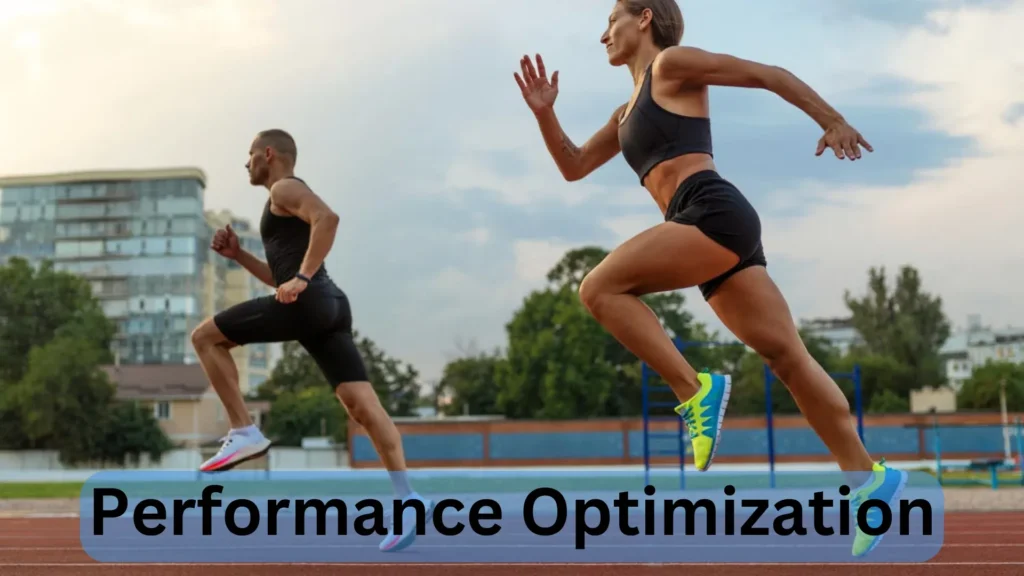
Understanding Performance Optimization for Athletes
As a sports psychologist, I’ve always been fascinated by the concept of performance optimization.
It’s the secret sauce that can take an average athlete and transform them into an exceptional one.
But what exactly is performance optimization?
Performance optimization, in the context of sports, refers to the process of maximizing an athlete’s physical and mental capabilities to achieve peak performance.
It involves understanding and manipulating various factors that can impact an athlete’s performance, such as nutrition, training, rest, and mental preparation.
The Importance of Performance Optimization in Sports
Performance optimization is crucial in the world of sports. Whether you’re a professional athlete or a recreational one, optimizing your performance can make all the difference in achieving your goals.
It’s what separates the winners from the losers, the champions from the average performers.
By focusing on performance optimization, as an athletes you can enhance your strength, speed, endurance, agility, and overall skill set.
It can also help prevent injuries and improve recovery time, allowing you to push your limits without compromising their long-term well-being.
Factors Affecting Athlete Performance
Numerous factors can affect an athlete’s performance.
One of the primary factors is nutrition. What you eat directly impacts your energy levels, muscle development, and overall health.
A well-balanced diet, rich in lean proteins, complex carbohydrates, healthy fats, and vitamins, is essential for optimal performance.
Training is another critical factor.
Athletes need to engage in a structured and progressive training program that targets their specific sport.
This includes a combination of strength training, cardiovascular exercises, and sport-specific drills to improve their skills and physical abilities.
Rest and recovery are often overlooked but are equally important.
Adequate sleep, regular rest days, and proper recovery techniques, such as massage or stretching, help the body repair and rebuild itself after intense training sessions.
Without sufficient rest, athletes risk overtraining, which can lead to decreased performance and increased injury risk.

Performance Optimization Techniques for Athletes
Now that we understand the importance of performance optimization and the factors that affect it, let’s dive into some techniques that can help athletes optimize their performance.
Nutrition and Performance Optimization
The saying, “you are what you eat,” holds true for athletes.
Proper nutrition is the foundation of performance optimization.
Athletes should focus on consuming a well-balanced diet that includes a variety of nutrient-dense foods.
This includes lean proteins like chicken, fish, and tofu, complex carbohydrates like whole grains and sweet potatoes, and healthy fats like avocados and nuts.
Hydration is also key. Athletes should aim to drink enough water to stay properly hydrated throughout the day and during training sessions.
Dehydration can lead to decreased performance, fatigue, and increased risk of injury.
Training and Performance Optimization
Training is where the magic happens.
To optimize performance, athletes should follow a well-structured training plan that targets their specific goals and sport.
This includes a combination of cardiovascular exercises, strength training, and sport-specific drills.
Cross-training is also beneficial as it helps prevent overuse injuries and improves overall fitness.
Incorporating activities like swimming, cycling, or yoga can enhance an athlete’s performance in their primary sport.
Rest and Recovery for Optimal Performance
Rest and recovery are just as important as training when it comes to performance optimization.
Athletes should prioritize getting enough sleep to allow their bodies to repair and rejuvenate. Aim for 8-9 hours of quality sleep each night.
Active recovery, such as light stretching or low-intensity activities, can also aid in muscle recovery and reduce post-workout soreness.
Additionally, incorporating rest days into your training schedule gives your body the time it needs to heal and adapt to the demands of your training.
Mental Preparation and Performance Optimization
Physical training alone is not enough to achieve peak performance.
Mental preparation plays a significant role in an athlete’s success.
Techniques such as visualization, goal setting, positive self-talk, and mindfulness can help athletes develop mental resilience and focus.
Visualization involves mentally rehearsing a desired outcome, such as winning a competition or executing a flawless performance.
Goal setting helps athletes stay motivated and provides a clear direction for their training.
Positive self-talk involves replacing negative thoughts with positive affirmations to boost confidence and self-belief.
Mindfulness practices, such as meditation or deep breathing exercises, can help athletes stay present and calm during high-pressure situations.
Performance Optimization Success Stories
To truly understand the power of performance optimization, let’s take a look at some success stories.
These athletes have mastered the art of performance optimization and achieved exceptional results in their respective sports.
Case Study 1: Michael Phelps
Michael Phelps, the most decorated Olympian of all time, is a prime example of performance optimization.
He focused not only on his physical training but also on his mental preparation and nutrition.
Phelps followed a rigorous training regime, including swimming drills, weightlifting, and cardiovascular exercises.
He also implemented mental strategies such as visualization and goal setting to maintain focus and motivation.
Case Study 2: Serena Williams
Serena Williams, one of the greatest tennis players of all time, attributes her success to performance optimization.
She combines intense physical training with mental resilience.
Williams follows a strict training regimen that includes strength training, on-court practice, and agility drills.
She also practices mental techniques such as positive self-talk and visualization to stay focused and confident during matches.

Tools and Resources for Performance Optimization
Luckily, athletes today have access to various tools and resources that can aid in their performance optimization journey. Here are a few worth exploring:
Sports nutritionists and dieticians can help athletes create personalized meal plans to optimize their nutrition.
Strength and conditioning coaches can design tailored training programs to improve physical performance.
Sports psychologists can provide mental strategies to enhance focus, motivation, and resilience.
Fitness apps and wearable devices can track and analyze performance metrics, providing valuable insights for improvement.
Online communities, like the Success Stories Community, offer a platform for athletes to connect, learn, and share their experiences in performance optimization.
Conclusion
So, as we close this chapter, remember: performance optimization isn’t just about the physical grind or the mental hustle.
It’s also about the people you surround yourself with.
Success Stories Community? That’s your squad, your backstage crew, the ones who cheer the loudest and push you the hardest.
Join in, and let’s get to that next level, together.
Think of it like having your own personal fan club and think tank rolled into one.
You’re not just getting support. You’re networking with like-minded individuals who know what it takes to win, in every sense of the word.
Whether you’re aiming to crush it on the field, on the court, or in the office, this is your tribe.
This membership is more than just a group of people.
It’s a space where you can share your struggles, celebrate your victories, and get that little (or big) nudge towards your personal best.
From casual weekend warriors to pro-level athletes, everyone’s journey towards high performance gets a turbo boost here.
Let’s do this!



